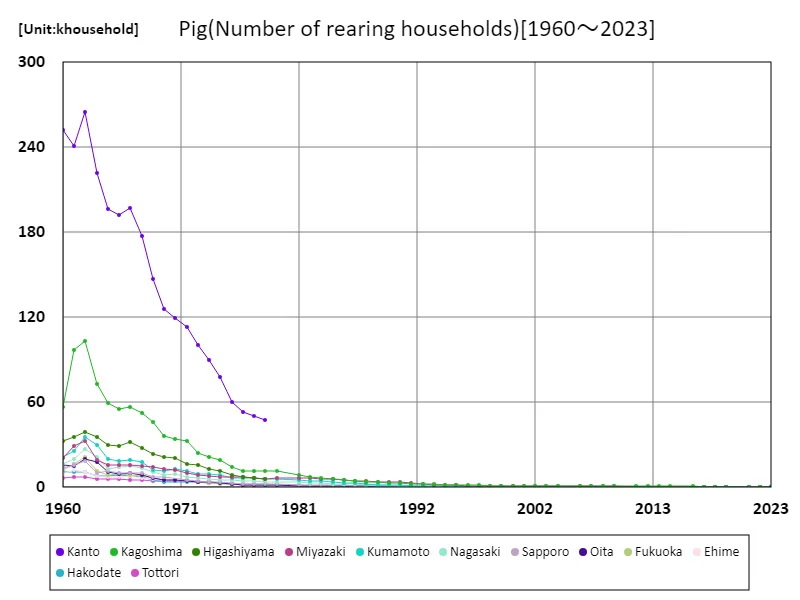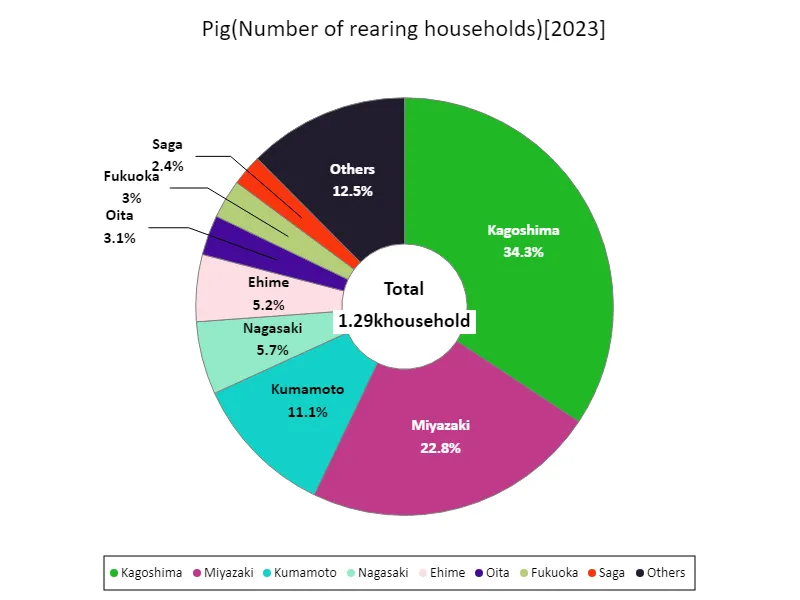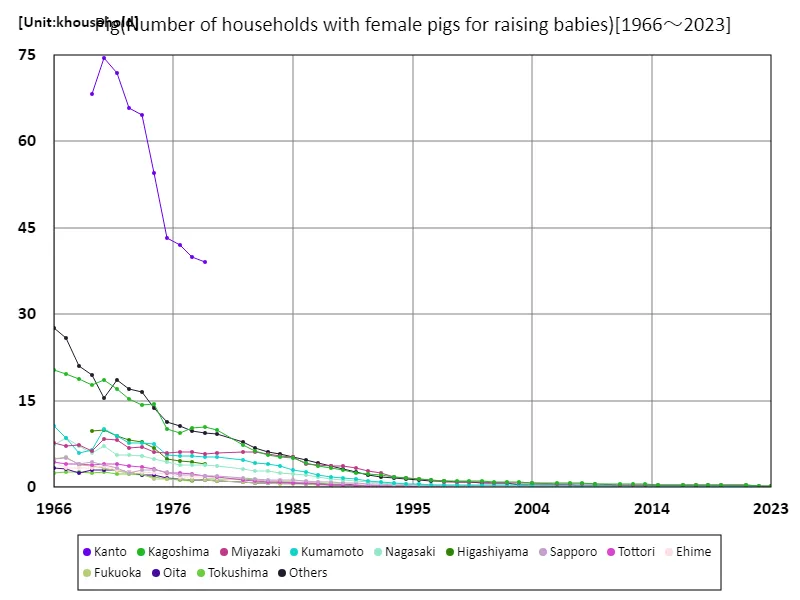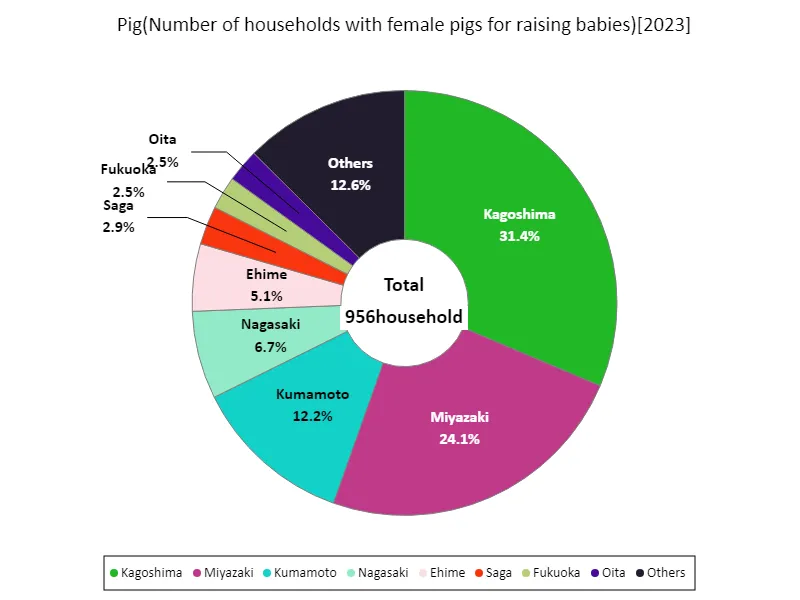Abstract
In Japan, livestock farming has seen significant trends and shifts over the years, particularly in pig farming. As of 2023, Kagoshima Prefecture leads with 443 households raising pigs, reflecting a strong regional commitment to this industry. Historically, Japan has focused on efficient breeding and husbandry practices to enhance pork production, with an emphasis on the quality of local breeds.
Over the past decade, the number of households raising pigs has fluctuated due to market demands and changes in consumer preferences. Female pigs for breeding are essential for sustainability, and trends indicate a gradual increase in their numbers as farmers adapt to rising pork consumption. Additionally, innovations in farming techniques and a growing interest in locally sourced products have further shaped the landscape of pig farming in Japan.
Number of households raising pigs
Since 1960, the number of households raising pigs in Japan has undergone significant transformations. The Kanto region recorded its peak in 1962, with 265,000 households, marking a high point in pig farming. However, by 2023, this figure has dramatically decreased to just 18.1% of its peak, reflecting broader trends in Japanese agriculture.
Factors contributing to this decline include urbanization, shifts in dietary preferences, and increasing competition from imported pork. Despite this downturn, the remaining pig farming households have adopted advanced breeding techniques and sustainable practices to enhance productivity.
The focus has shifted towards quality over quantity, emphasizing local and premium pork products in response to changing consumer demands, indicating a resilient adaptation within the industry.


The maximum is 265khousehold[1962] of Kanto, and the current value is about 18.1%
Number of households raising pigs (prefectures, latest year)
In 2023, Kagoshima Prefecture stands out as a leader in Japanese pig farming, recording 443 households raising pigs, which represents 100% of its peak level. This remarkable stability highlights the region’s commitment to maintaining robust agricultural practices and a strong local pork market.
Kagoshima’s success can be attributed to favorable climate conditions, effective breeding programs, and a focus on high-quality pork production. The region has increasingly emphasized sustainability and animal welfare, aligning with consumer preferences for locally sourced products.
Despite challenges such as market fluctuations and competition from imports, Kagoshima’s pig farming sector showcases resilience and adaptability, continuing to thrive while meeting the demands of a changing agricultural landscape.


The maximum is 443household of Kagoshima, the average is 64.6household, and the total is 1.29khousehold
Number of households with female pigs for breeding
In 1966, Japanese agriculture recorded significant statistics regarding households raising female pigs for piglet production, with the Kanto region leading at 74,500 units. This figure represented a crucial segment of the livestock industry, reflecting the region’s commitment to enhancing pork supply through effective breeding practices. The total number of households across Japan reached 161,000, with an average of 6,450 households contributing to piglet production.
Over the years, trends indicate a decline in the number of households as urbanization and changing agricultural practices reshaped the landscape. However, the remaining farms have focused on improving breeding techniques and animal welfare, adapting to market demands for higher-quality pork. This shift underscores the importance of sustainable practices and the resilience of pig farming in Japan’s evolving agricultural sector.


The maximum is 74.5khousehold[1970] of Kanto, and the current value is about 52.5%
Number of households with female pigs for breeding
In 2023, Japanese agriculture highlighted the dynamics of pig farming, with a total of 956 households raising pigs. Kagoshima Prefecture emerged as a notable leader, boasting 300 households dedicated to pig farming, reflecting its significant role in the industry. The average number of households across Japan is 47.8, indicating a concentration of pig farming in specific regions.
Trends show a shift towards smaller, more specialized farms focusing on quality and sustainability, responding to consumer preferences for premium pork products. Additionally, the emphasis on breeding female pigs for piglet production underscores the sector’s commitment to improving herd genetics and productivity. Overall, the resilience of pig farming in Japan showcases adaptability amid changing agricultural landscapes and market demands.


The maximum is 300household of Kagoshima, the average is 47.8household, and the total is 956household



Comments